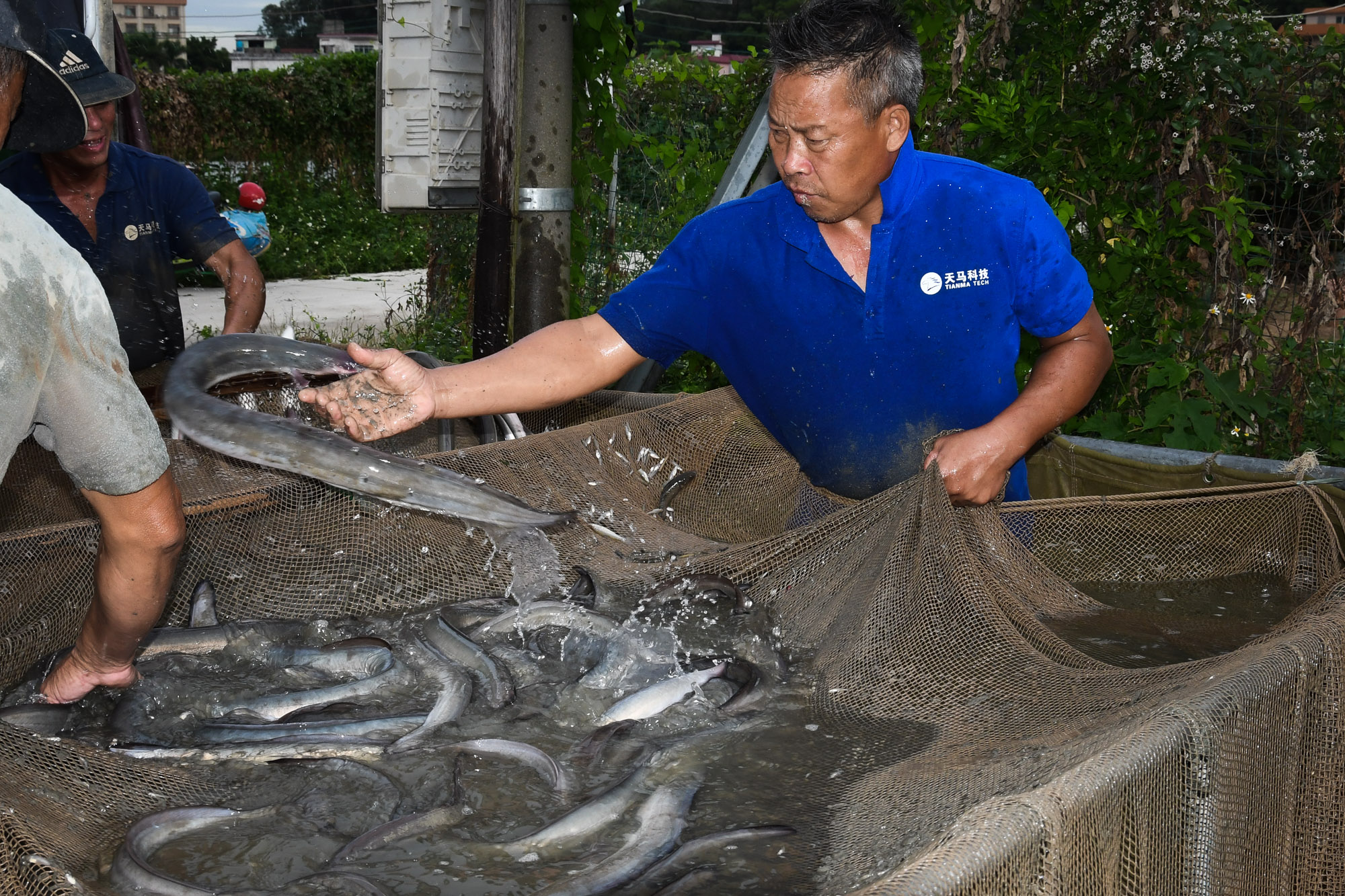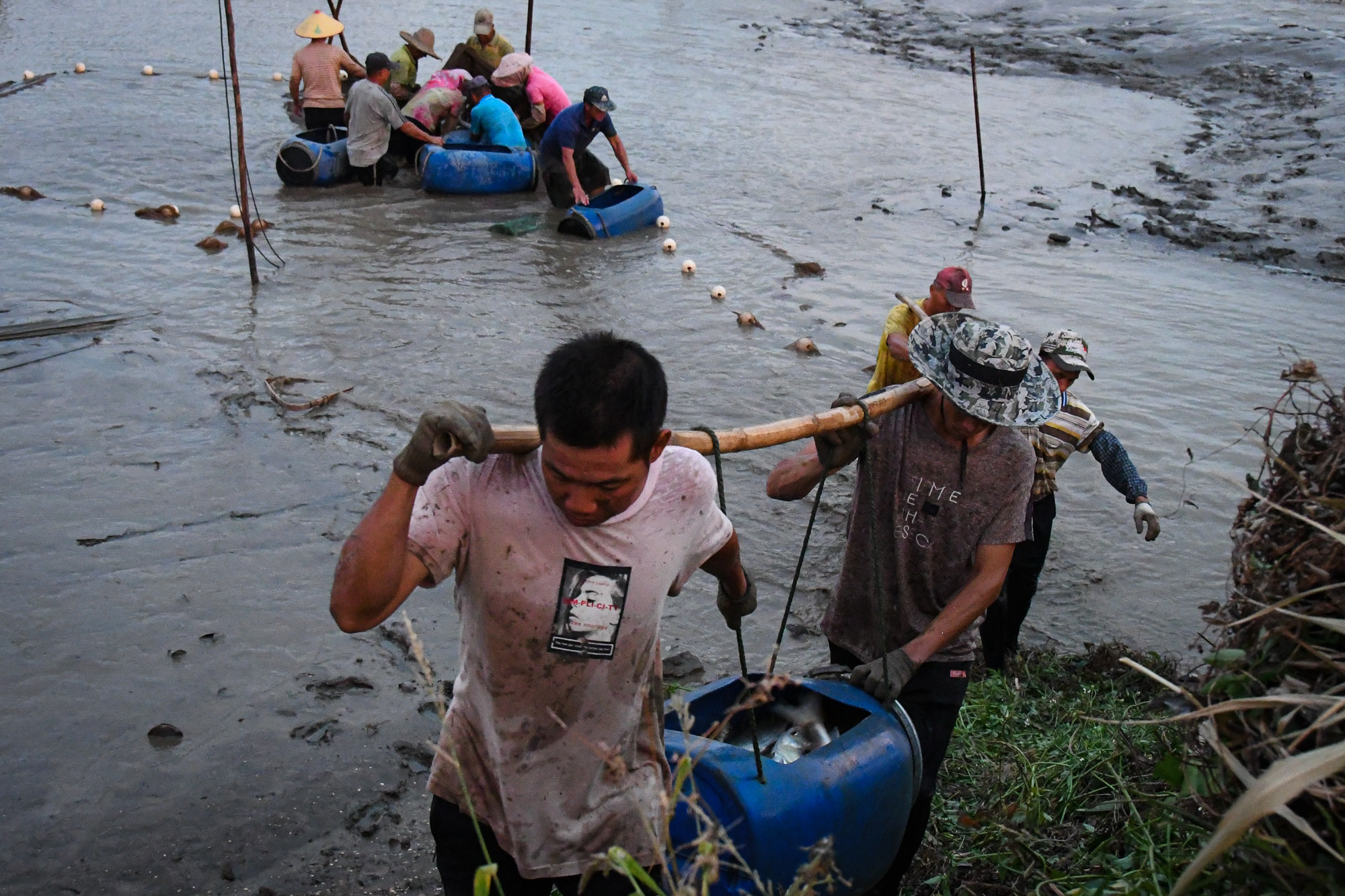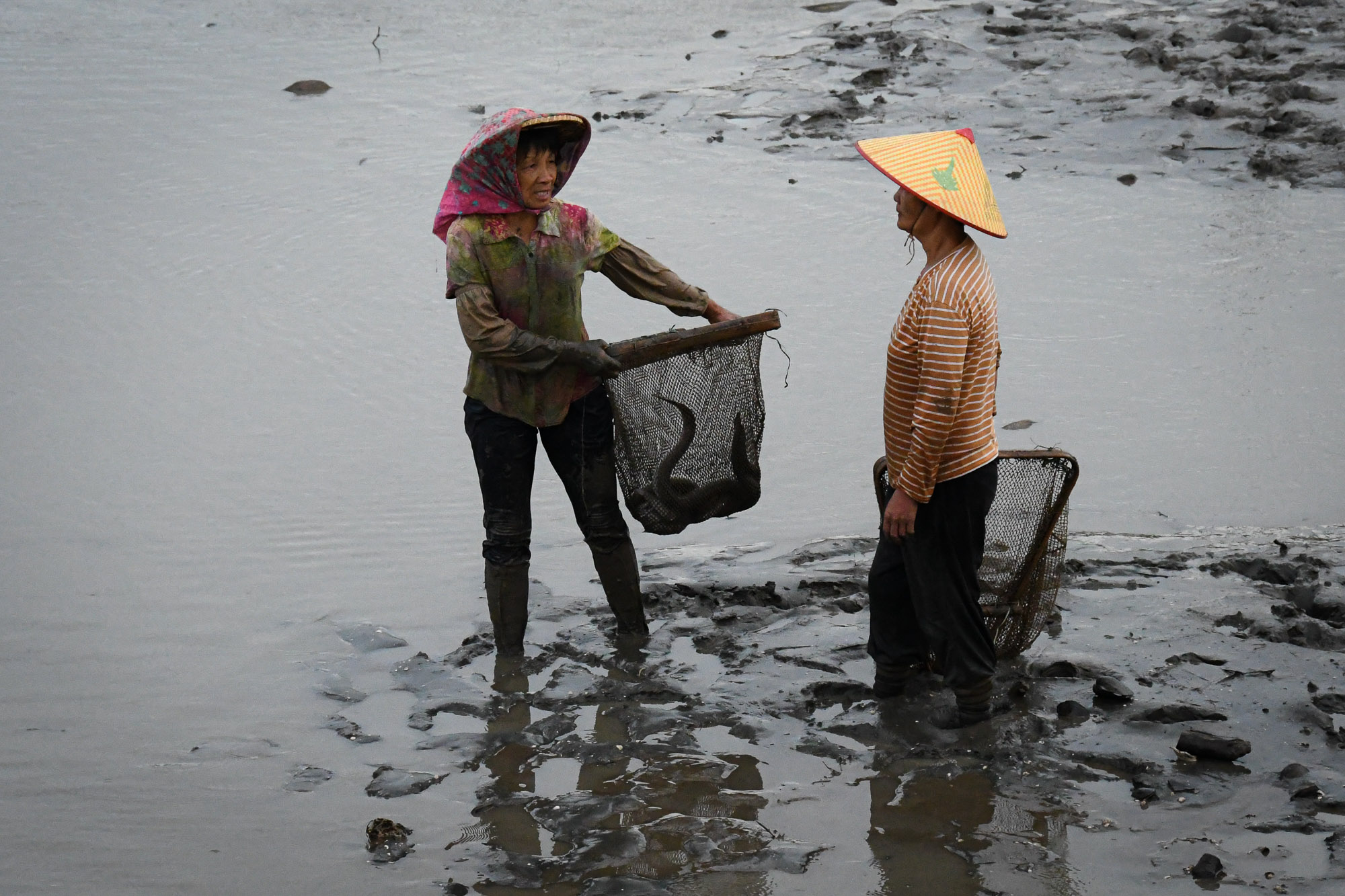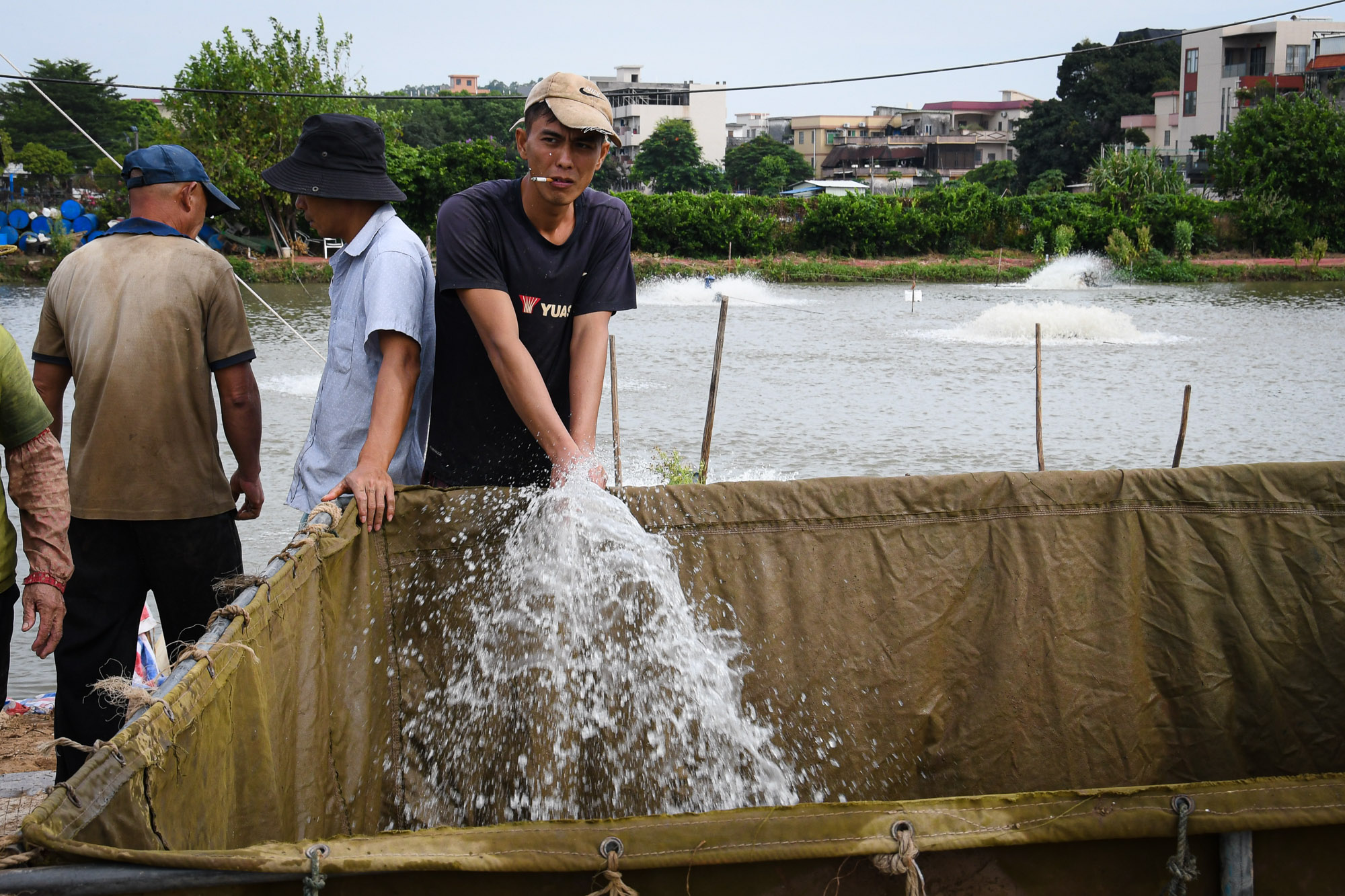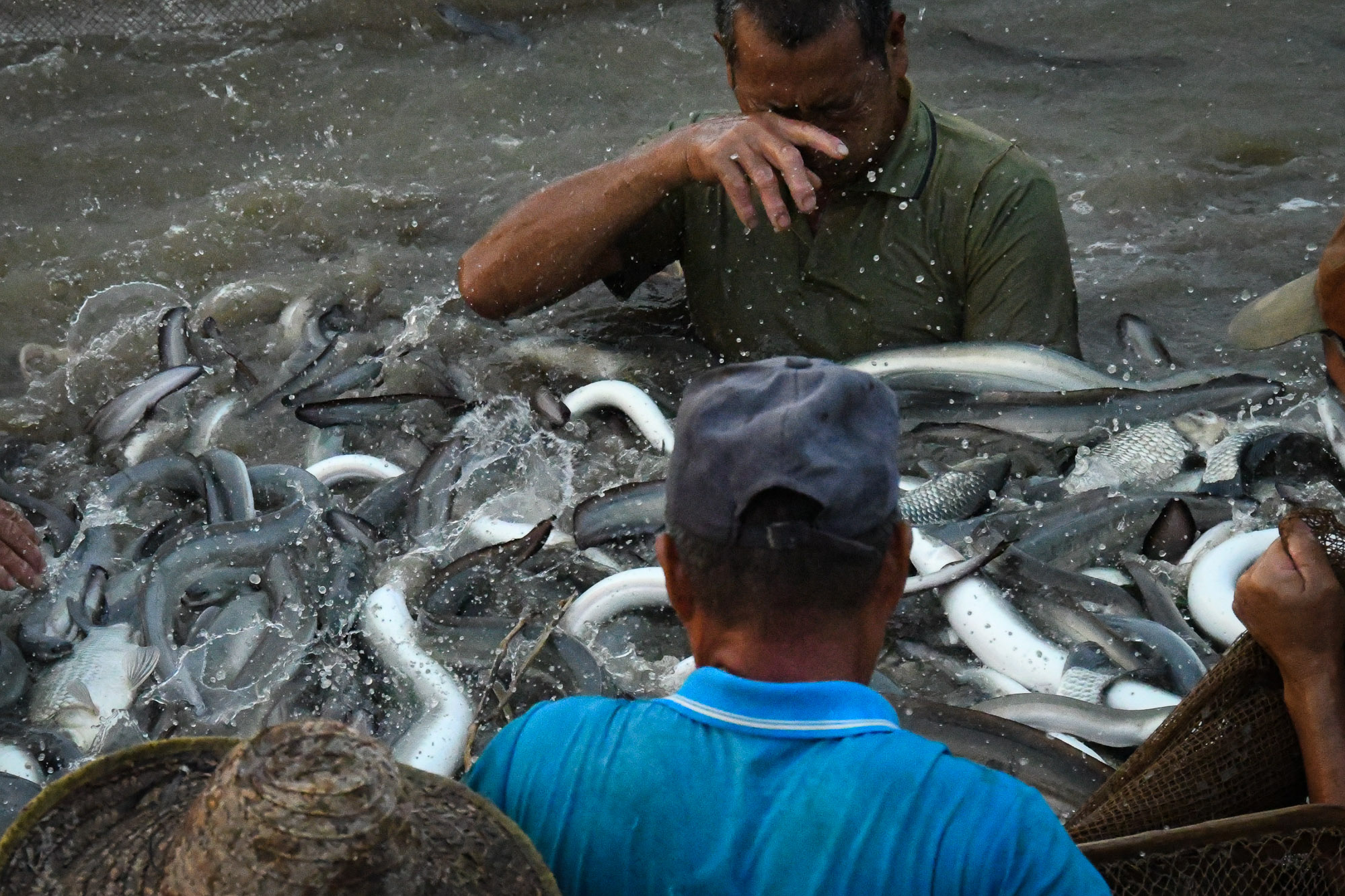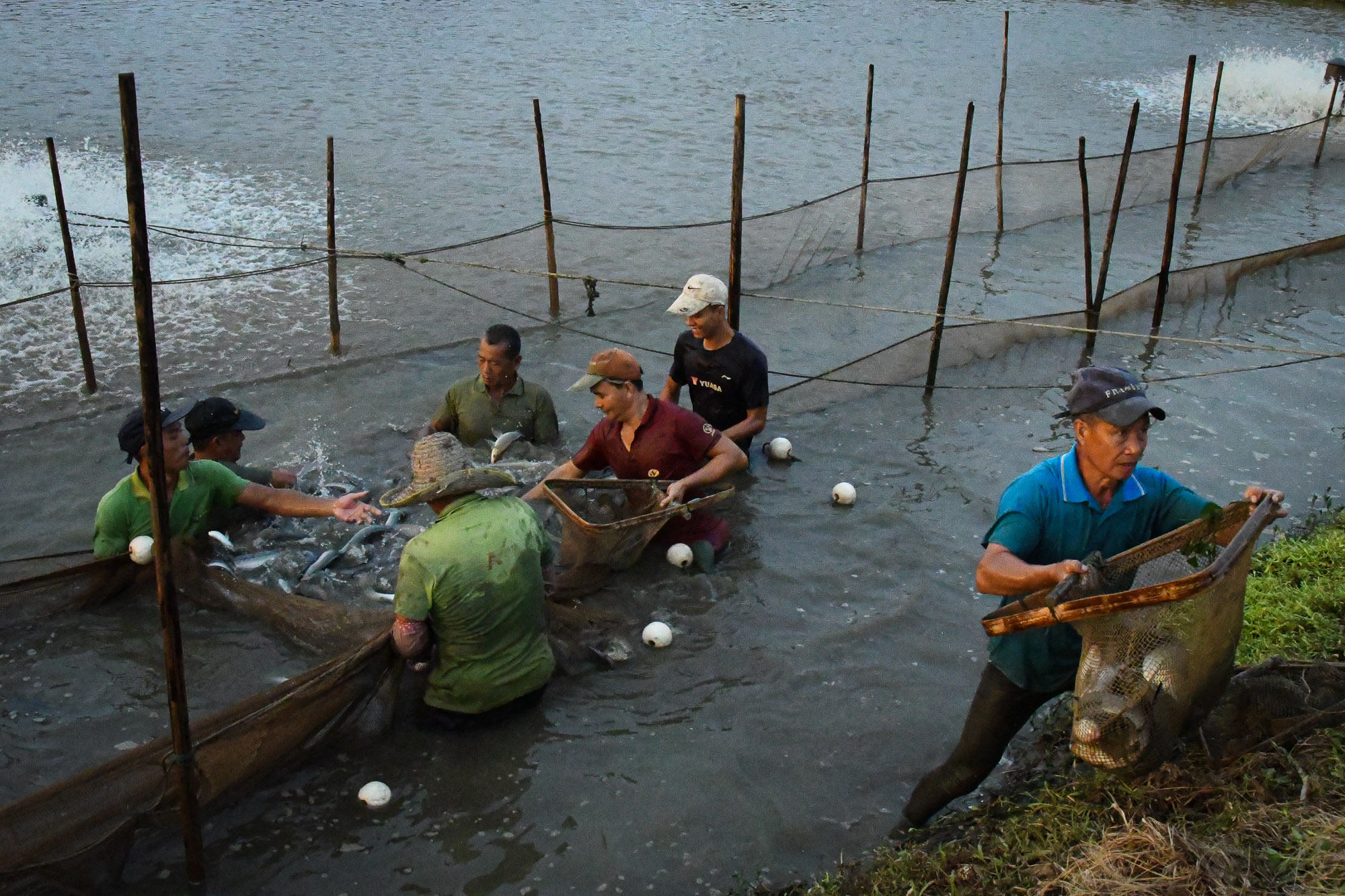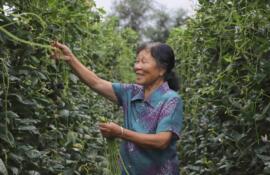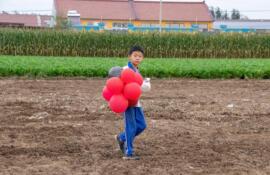Qiji Liang, 55, leads a fishing team in Shunde, where he has worked in the aquaculture fishing industry for more than 20 years. He and his team provide services to more than 20 eel farms in Shunde.
Shunde, in China’s Guangdong Province, is known as the hometown of eels and the harvest season that’s just finished is known as Golden September.
Eel is commonly served at Chinese wedding banquets and because September is the eighth month of the Chinese lunar calendar, which means reunion, Chinese people like to get married and hold wedding banquets during this month. Therefore, eels are in peak demand at this time of year.
China is the world’s largest producer of eels, with China’s eel exports accounting for 26 per cent of the world’s total exports in 2021. According to data from China’s General Administration of Customs, China’s eel exports grew 34% year-on-year to 9.66 million kilograms between January and August 2022, to a value of $182 million US dollars.
The growth of the industry reflects wider shifts in Chinese society. The government is proposing a redevelopment of the aquaculture industry to revitalise rural industries and encourage young people to return to rural areas to work. The hope is that greater opportunities in rural areas – especially for women and young people – will ease the burden on the country’s densely populated cities, where unemployment is rising rapidly.
Lu Qixin is one of the only three female employees of a well-reputed fisherman team in Shunde.
“Most of the female workers in the aquaculture sector in China only choose this job because their husbands are also working in the aquaculture industry, so there are very few female employees in this industry,” she said.
Shaotang Liang, 29, lost his last job in 2019, was not able to find another job due to the 2020 pandemic and the sluggish employment market, and eventually chose to join his father as an eel fisherman.
“I have seen more and more young people join the aquaculture industry or agricultural sector in the past two years,” said Liang.
“Many young people who used to work in cities are starting to return to their town in the country.”
The photos of this series are set in a medium-sized eel farm in Shunde, which has been operating for 15 years. Shunde is the largest eel breeding base in China and produces 30 per cent of the country’s eels. The pictures explore the industry from diverse angles, including the current status of female workers, the recovery of the aquaculture industry, and the trend towards a younger workforce in the industry.
I hope they will break the stereotype that the aquaculture industry is an aging industry, encourage the government to stop taking aquaculture land for real estate development and inspire more young Chinese to return to work in rural areas.

